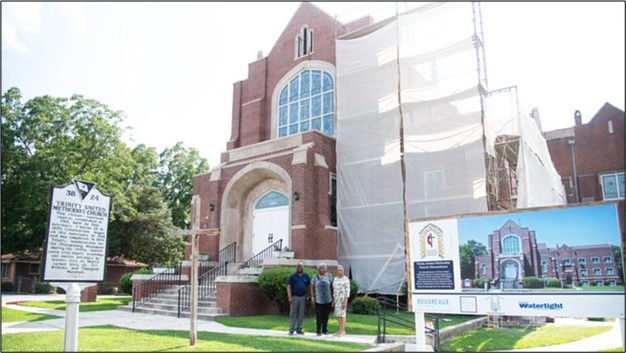By: WeGOJA Foundation (with information from NPS State, Tribal, Local, Plans & Grants Division)
May 7, 2024
The Ask an Expert series features Q + A’s with people who are experts in a particular field or who have a depth of knowledge around historic preservation. We ask experts a variety of short answer questions and ask for their advice to Black preservation projects and leaders.
| What is the purpose of the National Park Service’s African American Civil Rights grants? |
|---|
| The National Park Service (NPS)’s Historic Preservation Fund provides grants to local communities to help document, interpret, and preserve sites and stories related to civil rights. Many of these grants are competitive which means that an organization will submit an application that is reviewed and scored to determine if it will receive funding. Information about various grant programs will be found on NPS websites but the actual announcement of applications and submission of applications will take place through Grants.gov. Preparing and submitting an application takes time, so make sure to start investigating how to apply early. African American Civil Rights (AACR) grants fund a broad range of planning, development, and research projects for historic sites including: survey, inventory, documentation, interpretation, education, architectural services, historic structure reports, preservation plans, and “bricks and mortar” repair. Grant projects are split into two categories: preservation projects and history projects. Preservation project grants are for the repair of historic properties. History project grants are for more interpretive work such as exhibit design or historical research. This competitive grant program provides grants to states, tribes, local governments (including Certified Local Governments), and nonprofits. Non-federal matching is not required. |
| How should property owners and community leaders prepare for applying for African American historic preservation grants in the STLPG division? |
|---|
Begin by fully understanding requirements for acquiring and using federal funds, and reporting to funders once the project is complete. Know what can be funded, how important matching funds are and, although not required, complete registration at SAM.gov (https://sam.gov/content/home , including obtaining your Unique Entity ID, and follow funding cycles at this link https://www.nps.gov/subjects/historicpreservationfund/bulletin-update.htm. You can also stay abreast of grant news by subscribing to the National Park Service’s bulletin at this link https://www.nps.gov/subjects/historicpreservationfund/bulletin-update.htm. |
| Any case studies or great examples from South Carolina? |
|---|
| This grant program provides assistance to many South Carolina organizations. In its latest round of awards, the following organizations were funded: Clemson University – $55,625 Clemson University African American History Video Project – Clemson University of South Carolina – $4,250,000 Preservation of the Florence C. Benson Elementary School, an equalization school and a resource associated with segregation in Columbia, SC – Columbia South Carolina Rural Education Grassroots Group – $750,000 Stabilization and Preservation of the former Edgewood School, an Equalization School, Now serving as Edgewood Community Center –Ninety-Six Center for Creative Partnerships – $750,000 Preservation of All Star Bowling Lanes – Orangeburg |

